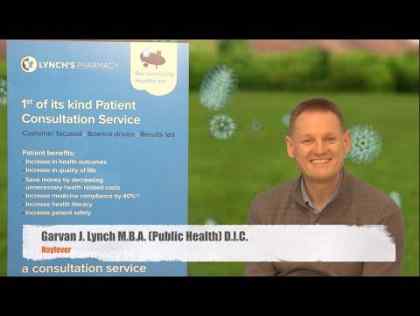Nasonex nasal spray contains the active ingredient mometasone, which is a type of medicine known as a corticosteroid (or steroid).

What is Nasonex nasal spray used for?
- Nasal allergies (seasonal allergic rhinitis) such as hay fever in adults and children aged three years and over.
- Nasal allergies that occur throughout the year (perennial allergic rhinitis), for example due to pet allergies or dust mite allergies, in adults and children aged three years and over.
- Nasal polyps in adults aged 18 years and over.
How does Nasonex nasal spray work?
- Nasonex nasal spray contains the active ingredient mometasone, which is a type of medicine known as a corticosteroid (or steroid).
- Corticosteroids are hormones produced naturally by the adrenal glands that have many important functions, including control of inflammatory responses.
How do I use Nasonex nasal spray?
- Follow the instructions provided with the nasal spray. You should shake the bottle gently before use.
- Before you use the nasal spray for the first time it needs to be primed by pumping it into the air 10 times until a fine mist is produced. Hold the bottle upright and away from you while you are doing this. If the nasal spray hasn'’t been used for 14 days or more you should reprime the spray by pumping it twice into the air before using it again.
- Follow this link for general instructions on how to use a nasal spray.
- For allergies, you should preferably start using this nasal spray a few days before you expect to come into contact with the allergen (your doctor may suggest you start treatment two to four weeks before the pollen season if you suffer from very severe hay fever) and continue using it regularly all the time you are still exposed to the thing you are allergic to. Follow the instructions given by your doctor.
- To treat allergies such as hay fever, adults and children aged 12 years and over should use two sprays in each nostril once a day. Once your symptoms are under control you may be able to reduce your dose to one spray in each nostril once a day. If your symptoms are not controlled you should see your doctor, who may ask you to use the maximum dose of four sprays in each nostril once a day, and then reduce to two sprays in each nostril once a day once the symptoms have improved. You should always use the lowest dose necessary to relieve your symptoms. Do not use more than your doctor has prescribed.
- To treat allergies such as hay fever in children aged 3 to 11 years, the usual dose is one spray in each nostril once a day. Do not use more than your doctor has prescribed.
- For the treatment of nasal polyps, adults aged 18 years and over should use two sprays in each nostril once a day. If your symptoms are not improved after five to six weeks of treatment at this dose you should see your doctor, who may ask you to use the maximum dose of two sprays in each nostril twice a day. Once symptoms are under control, your doctor should ask you to reduce your dose to the lowest amount where symptoms are still controlled. If your symptoms don't improve on the maximum dose you may need a different treatment. Follow the instructions given by your doctor.
- If you forget to use your nasal spray use it as soon as you remember, unless it is nearly time for your next dose. In this case just leave out the forgotten dose and take the next dose as normal. Don'’t use a double dose to make up for a missed dose.
Nasonex nasal spray should be used with caution by
- People with an infection in the nasal passages or sinuses (the infection should be treated).
- People who have recently had nasal surgery or an injury to the nose (this medicine should not be used until the nose has healed).
- People with tuberculosis affecting the lungs.
Nasonex nasal spray should not be used by
- This medicine is not recommended for treating nasal allergies in children under three years of age, or for treating nasal polyps in children under 18 years of age.
- This medicine should not be used if you are allergic to any of its ingredients. Please inform your doctor or pharmacist if you have previously experienced such an allergy.
If you feel you have experienced an allergic reaction, stop using this medicine and inform your doctor or pharmacist immediately.
Pregnancy and breastfeeding
Certain medicines should not be used during pregnancy or breastfeeding. However, other medicines may be safely used in pregnancy or breastfeeding providing the benefits to the mother outweigh the risks to the unborn baby. Always inform your doctor if you are pregnant or planning a pregnancy, before using any medicine.
- The safety of this medicine for use during pregnancy has not been established. Only minimal amounts of the medicine pass into the bloodstream after using the nasal spray. However, the manufacturer states that this medicine is not recommended for use in pregnancy unless the potential benefit to the mother outweighs any risk to the developing baby. Ask your doctor for further medical advice.
- It is not known if this medicine passes into breast milk. The manufacturer states that it is not recommended for use during breastfeeding unless the potential benefit to the mother outweighs any risk to the nursing infant. Seek further medical advice from your doctor.
Possible side effects of Nasonex nasal spray
Medicines and their possible side effects can affect individual people in different ways. The following are some of the side effects that are known to be associated with this medicine. Just because a side effect is stated here, it does not mean that all people using this medicine will experience that or any side effect.
Common (affect between 1 in 10 and 1 in 100 people)
- Nosebleeds.
- Irritation or burning sensation in the nose.
- Ulceration in the nose.
- Throat irritation.
- Inflammation and soreness of the throat (pharyngitis).
- Upper respiratory tract infections such as colds.
- Headache.
Frequency not known
- Perforation of the nasal septum.
- Raised pressure in the eye or glaucoma.
- Cataracts.
- Narrowing of the airways and shortness of breath (bronchospasm - an allergic reaction).
- Allergic reactions such swelling of the lips, throat and tongue (angioedema) or anaphylactic shock.
- Smell or taste disturbances.
Side effects similar to those associated with corticosteroids taken by mouth may occur if this medicine is absorbed into the bloodstream. This is unlikely unless the medicine is used at high doses for prolonged periods of time. See the warning section above or talk to your doctor or pharmacist for more details.
The side effects listed above may not include all of the side effects reported by the medicine's manufacturer. For more information about any other possible risks associated with this medicine, please read the information provided with the medicine or consult your doctor or pharmacist.
How can Nasonex nasal spray affect other medicines?
Mometasone is not known to affect other medicines when administered into the nose as a nasal spray.
- However, if you are taking any other medicines, including those bought without a prescription and herbal medicines, you should tell your doctor or pharmacist before you start treatment with this medicine. This is particularly important if you are or have recently been using any other medicines that contain corticosteroids, for example tablets, injections, eye or nose drops, creams, asthma inhalers, or other similar nasal sprays. This is because there may be an increased chance of adverse effects if you are using more than one type of steroid medication and your doctor may want to monitor you more closely.
References:
http://www.rxlist.com/nasonex-side-effects-drug-center.htm
https://www.drugs.com/nasonex.html
https://www.merck.com/product/usa/pi_circulars/n/nasonex/nasonex_pi.pdf
http://www.netdoctor.co.uk/medicines/allergy-and-asthma/a7186/nasonex-nasal-spray-mometasone/


